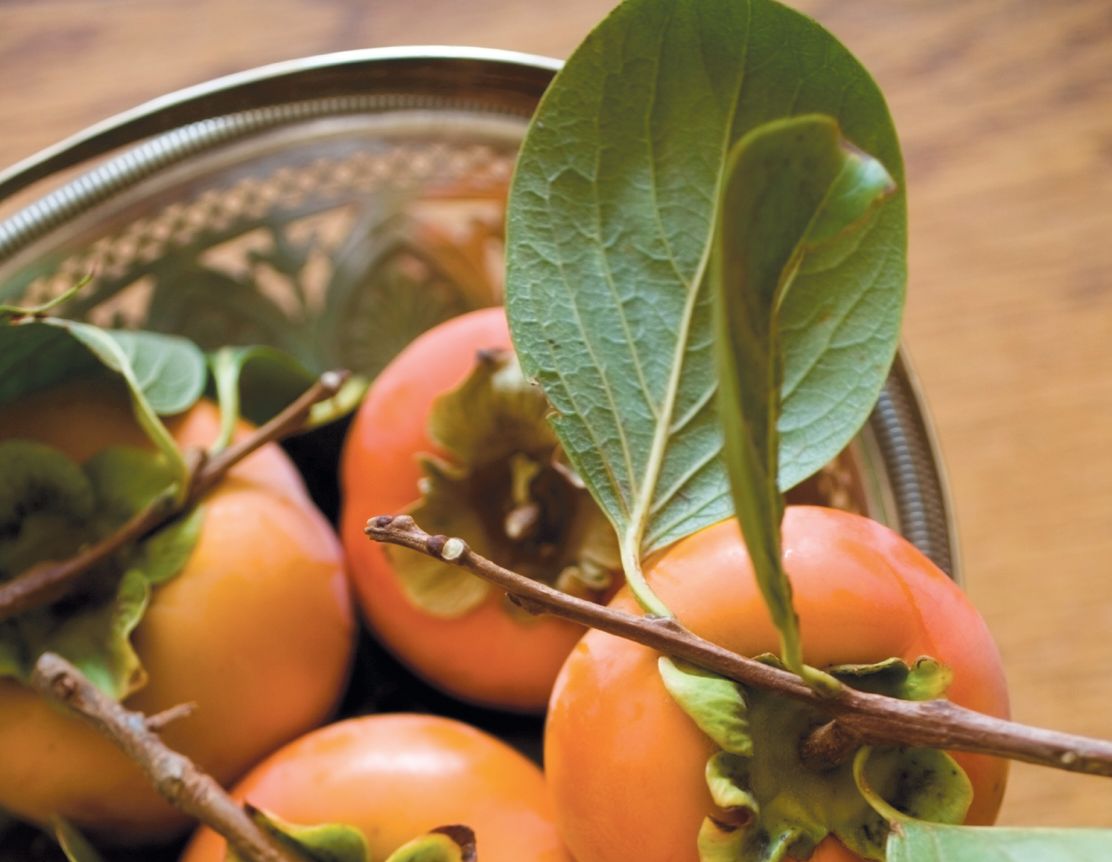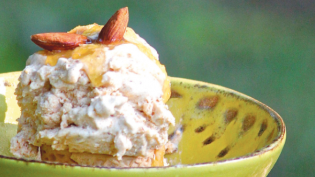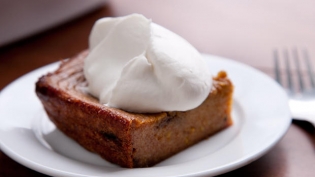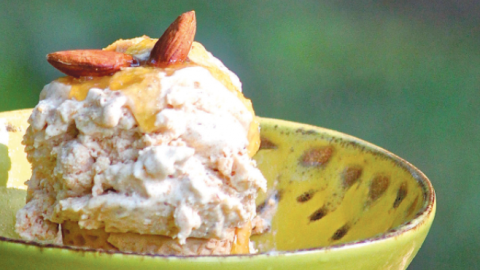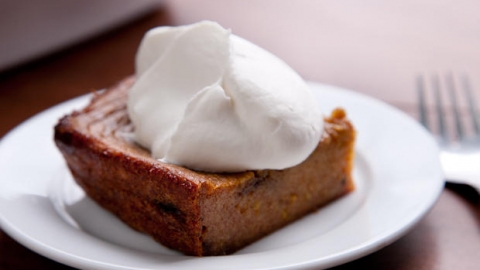Sweet Tart: Persimmons Offer a Fall Bounty of Possibilities
When fall rolls around, persimmons pack a potent punch of authentic Hoosier flavor.
This humble little fruit is revered in southern portions of the state, where persimmon trees are common. Without question, the most popular preparation is persimmon pudding, a spiced gingerbread- like cake served in scoops or squares with a dollop of whipped cream on top.
For some, persimmons signal one thing: It's fall. For other, it means – well – not much at all. The Southern Indiana gem is less known even as far north as Indianapolis.
In the fall, pastry chef Cindy Hawkins tucks persimmon tarts and bread pudding into the display case at Circle City Sweets, her bakery located at Indianapolis City Market. But Hawkins, who is from Plymouth, says she didn't come across the southern fruit in northern Indiana.
"I had never heard of or seen persimmons until I was the pastry chef at the [former] Tavern at the Temple," Hawkins says. "Chef Brad Gates got a box of them in and said, 'Cindy, make something with these.' I didn't even know how to cut into one; Brad had to show me. Then I started researching recipes."
Bearing a slight resemblance to a plum, the dusky-orange Indiana fruit is not to be confused with the larger tomato-sized Fuyu variety that originated in Northern Asia and Japan. Fuyu persimmons can be found in grocery stores and are more appropriate for raw preparations in salads and other recipes; Indiana persimmons are more often than not processed into pulp.
"The Indiana ones are much smaller, and I think they are better for puréeing," Hawkins says. "If I want to use slices for a dessert, I typically pick up the Fuyu persimmons."
Persimmon season typically starts in September and lasts through the first frost. According to tradition, Indiana persimmons are best gathered only after the fruit has ripened completely and fallen to the ground. Patience counts: Biting into an astringent persimmon too early can cause a serious mouth pucker, but when they are fully ripe the taste is rich, mellow and sweet.
Caveat emptor: Prepping persimmons for puréeing requires something of a commitment. After gathering, the fruit must be thoroughly washed and then strained through a food mill or colander to remove the seeds and skins. The end result is the prized pulp that can be incorporated into cakes, muffins, breads, sauces and, of course, persimmon pudding.
Or, try this timesaver: Fresh persimmon pulp is available seasonally at farmers' markets, orchards and natural food stores. Apple Acres (812-279-9721) on S.R. 37 north of Mitchell offers local persimmon pulp at its general store in the fall, and Persimmon Pleasures (PersimmonPleasures.com) in Bedford sells and ships frozen pulp (as well as persimmon chocolate chip cookies) year-round. Expect to pay between $5 and $8 per pint.
Want to simply enjoy the fruit without all the labor? Persimmon pudding stays on the dessert menu year-round at the Spring Mill Inn (877-563-4371) at Spring Mill State Park in Mitchell.


